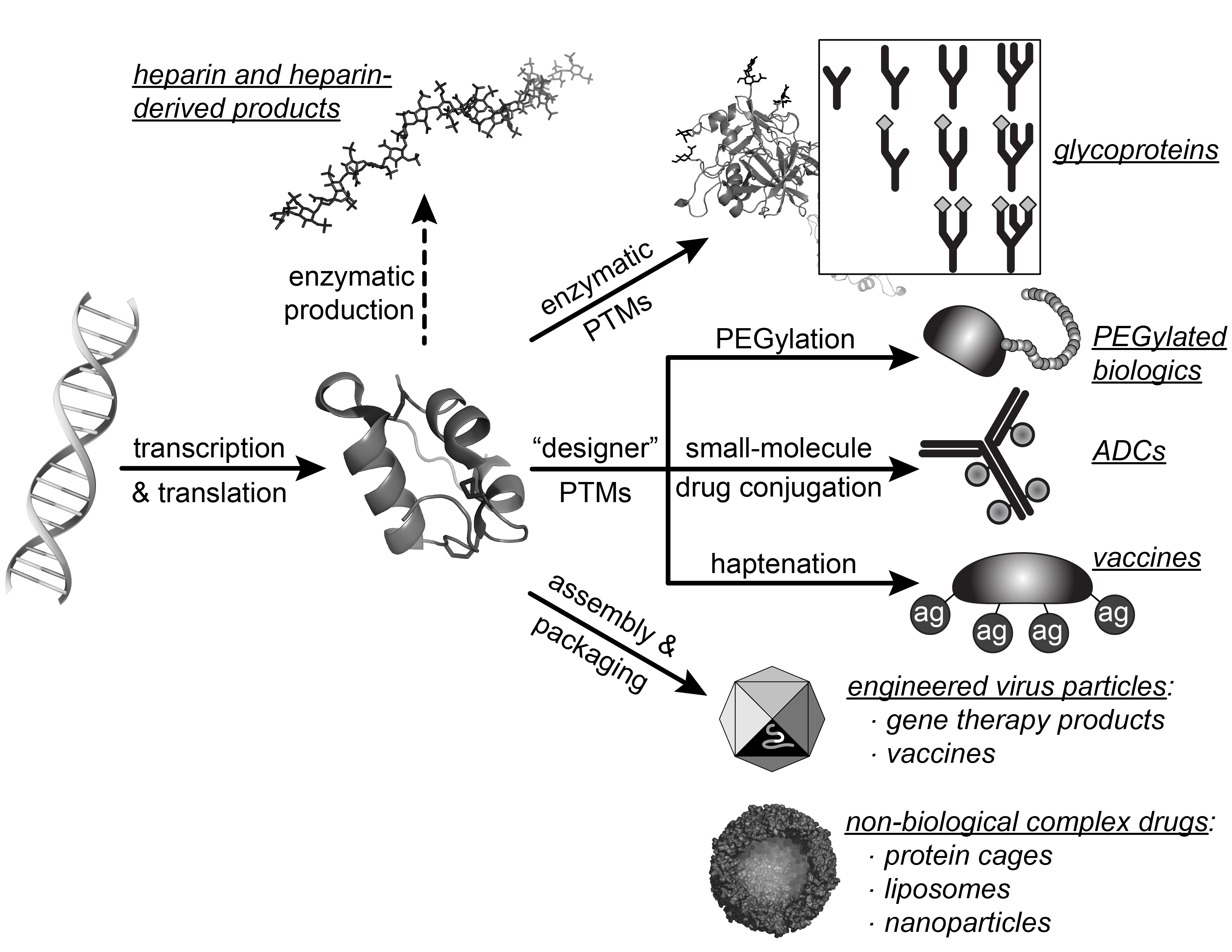
High-throughput characterization of increasingly complex and heterogeneous protein structures (including both primary and higher order structures) is now required in a variety of fields ranging from personalized medicine (biomarkers) to industrial-scale production of recombinant proteins (for both product quality control and feedback adaptive process control). However, extensive structural characterization usually involves several multi-step processes that are both time- and labor-consuming, and frequently cannot be implemented in a high-throughput format. Additional complication arises from the presence of multiple protein sub-populations in the analytical/clinical/production sample, which may exhibit altered functional or biophysical properties despite having very similar structural characteristics (e.g, small soluble aggregates, aberrant glycoforms, disulfide-scrambled species, etc.). Our research aims at developing a robust and versatile analytical technology using the novel cross-path reactive chromatography (XP-RC) platform with on-line detection by ESI MS augmented by protein ion manipulation in the gas phase (including both conventional top-down MS/MS and the limited charge reduction technique developed in our laboratory). XP-RC allows protein chemical modifications (such as disulfide reduction and covalent labeling) to be combined in-line with the separation step and enables real-time MS measurements that are not adversely affected by components incompatible with the ESI process. This is achieved by utilizing the unique elution characteristics (retention) of proteins and small-molecule reagents in non-denaturing chromatographic media (size exclusion or ion exchange); during their retention the proteins can be exposed to various reagents to induce the desired modification(s) in a highly controlled fashion.
Related publications
Y. Yang, D.G. Ivanov, M.D. Levin, B. Olenyuk, O. Cordova-Robles, B. Cederstrom, J.E. Schnitzer, and I.A. Kaltashov. Characterization of large immune complexes with size exclusion chromatography and native mass spectrometry supplemented with gas phase ion chemistry. Anal. Chem., 2024, 96, 2822-2829 (doi: 10.1021/acs.analchem.3c03278)
W. Yang, D.G. Ivanov and I.A. Kaltashov. Extending the capabilities of intact-mass analyses to monoclonal immunoglobulins of the E-isotype (IgE). MAbs 2022, 14, 2103906 (doi: 10.1080/19420862.2022.2103906)
D.G. Ivanov, Y. Yang, J.W. Pawlowski, I.J. Carrick and I.A. Kaltashov. Rapid evaluation of the extent of haptoglobin glycosylation using orthogonal intact-mass MS approaches and multivariate analysis. Anal. Chem. 2022, 94, 5140-5148
Y. Yang, D.G. Ivanov and I.A. Kaltashov. The challenge of structural heterogeneity in the native mass spectrometry studies of the SARS-CoV-2 spike protein interactions with its host cell-surface receptor. Anal. Bioanal. Chem. 2021, 413, 7205-7214
Y. Yang, C. Niu, C.E. Bobst and I.A. Kaltashov. Charge manipulation using solution and gas-phase chemistry to facilitate analysis of highly heterogeneous protein complexes in native mass spectrometry. Anal. Chem. 2021, 93, 3337–3342
I.A. Kaltashov, J.W. Pawlowski, W. Yang, K. Muneeruddin, H. Yao, C.E. Bobst, and A.N. Lipatnikov. LC/MS at the whole protein level: Studies of biomolecular structure and interactions using native LC/MS and cross-path reactive chromatography (XP-RC) MS. Methods, 2018, 144, 14-26
J.W. Pawlowski, I. Carrick and I.A. Kaltashov. Integration of On-column Chemical Reactions in Protein Characterization by LC/MS: Cross-Path Reactive Chromatography. Anal. Chem., 2018, 90, 1348-1355
K. Muneeruddin, C.E. Bobst, R. Frenkel, D. Houde, I. Turyan, Z. Sosic and I.A. Kaltashov. Characterization of a PEGylated protein therapeutic by ion exchange chromatography with on-line detection by native ESI MS and MS/MS. Analyst 2017, 142, 336
R.R. Abzalimov and I.A. Kaltashov. Electrospray ionization mass spectrometry of highly heterogeneous protein systems: protein ion charge state assignment via incomplete charge reduction. Anal. Chem., 2010, 82, 7523-7526